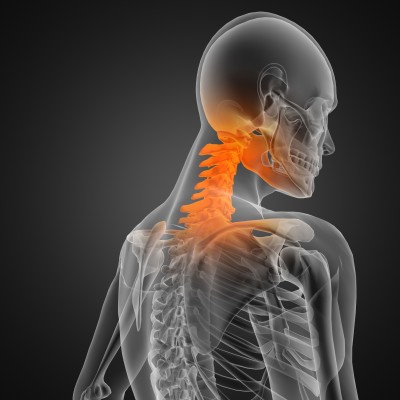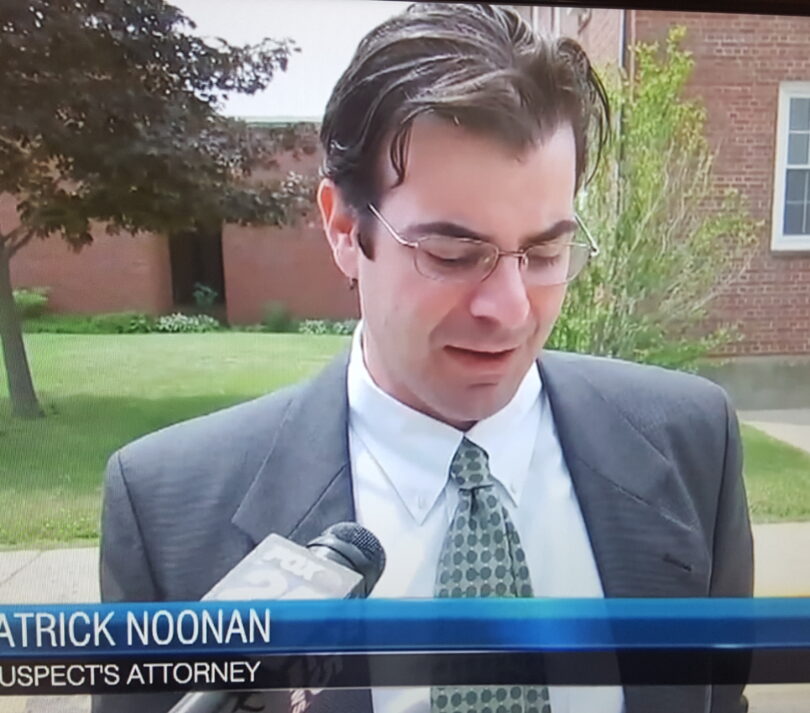
Cervical Strains and Sprain Injuries
The cervical spine starts at the base of the head, or skull, and runs down to the shoulders and upper back where it connects to the thoracic spine. The cervical spine is comprised of 7 vertebrae (C1-C7) that house the spinal cord. In addition to protecting the spinal cord and supporting the head, the cervical spine provides the head with its range of motion and flexibility- it is what allows us the turn our heads up and down and side to side. An intricate network of muscles, ligaments and tendons runs through the cervical spine which helps provide the support and stability along with the flexibility and range of motion.
The force generated in a rear-end crash causes the head to whip back and then forward in a matter of milliseconds. When the head is in motion the cervical spine fights to stabilize the head. This exerts a considerable amount force on the spine and neck which causes the ligaments, muscle and tendons to strain. This stretches the tendons, ligaments and muscles past their limits which results in cervical strains and sprains and even tears.
Cervical strains and sprain injuries can cause muscle and tissue inflammation, tightening and spasms. The back part of the skull, or the occipital region, is comprised of many sensitive features including the occipital nerve. A cervical strains and or sprain can also cause muscle inflammation, tightening and spasms in the occipital region which can put pressure on the occipital nerve causing headaches and neck stiffness.
Cervical Herniated Disc
The spine consists of 33 vertebrae, 7 of which at located in the cervical spine or neck, and 23 discs, 6 of which are located in the cervical region. The cervical spine begins at the base of the skull and runs down to the shoulder blades where it connects to the thoracic spine. The first vertebra at the base of the skull is C1 followed by C2, C3, C4, C5, C6 and C7. The discs are number by their location within the vertebral column. A disc between the second cervical vertebra (C2) and third cervical vertebra (C3) is the C2-3 disc.
When a disc suffers an injury, the outer layer of the disc or donut gets stretched and then cracks which causes the jellylike material inside to ooze out. Often times the oozing disc material leaks into the spinal canal where it comes in contact with a nerve exiting from the spinal column. When the jelly escapes the disc it’s known as a herniated disc. The pressure that the oozing material places on the surrounding spinal nerve can create great pain, numbness, tingling and weakness in other areas of the body. If a disc that is located between the vertebrae of the cervical spine—the neck—is herniated or ruptures then the pressure placed on the surrounding nerves.
The nerves in the C2 region are exposed and can easily get crushed by the bones in the cervical neck when the head is violently thrown back and forth in a car accident. These nerves are also easily irritated by the bulging or ruptured discs. Injuries to nerves at the C2 level can cause severe headaches behind the eyes, at the back of the skull or behind the ears. They can cause cramp like feelings in the scalp and a feeling like your hair is on fire. Injuries to nerves locate near the C3 create headaches that go up the neck and over the ears and are characterized as producing sharp, shooting or jabbing pain.
Myofascial Trauma
Myofascial injuries are injuries to the muscles and the connective tissue surrounding the muscles in the body. Myofascial pain means pain that comes from the muscles and connective tissues. Whiplash type accidents can cause Myofascial injuries to the neck and back of the skull. Symptoms of myofascial injuries are muscle and tissue inflammation, tightening and spasms. The back part of the skull, or the occipital region, is comprised of many sensitive features including the occipital nerve. A myofascial injury to the occipital region can cause muscle inflammation, tightening and spams which can put pressure on the occipital nerve causing headaches.
Cervical Facet Injuries
Facet joints are small joints that hold together the vertebrae that makeup the spine. Together with the cushion-like discs that separate the vertebrae, the facet joints stabilize the spine and allow it to bend and twist. They also prevent the spine from twisting and bending too much. Cervical facet joints are located in the cervical spine or neck.
Occipital Neuralgia is a specific type of cervicogenic headache which occurs when pressure is placed on the occipital nerve. The occipital nerve starts between the first and second cervical vertebrae (C1-C2) and runs up through the trapezius muscle and into the back of the scalp where it carries signals to the top of the head and over the ears.
One source of nerve damage leading to neck pain and headache occurs at the C2 level. The nerves in the C2 region are exposed and can easily be irritated if the facet joint destabilize. Injuries to nerves at the C2 level can cause severe headaches behind the eyes, at the back of the skull or behind the ears. They can cause cramp like feelings in the scalp and a feeling like your hair is on fire. Injuries to nerves locate near the C3 create headaches that go up the neck and over the ears and are characterized as producing sharp, shooting or jabbing pain.
Experienced Accident Attorneys On Your Side
Attorney Gerald J. Noonan has obtained many favorable settlements and verdicts for automobile accident victims, injuries from slip and fall accidents, and other negligence-related cases. Call The Law Offices of Gerald J. Noonan today at 508-588-0422
Our Massachusetts wrongful death, personal injury, and accident trial lawyers are dedicated to the efficient and effective handling and management of the firm’s personal injury cases. Our clients have unfettered access to the paralegal responsible for managing his or her case and can be confident that their case is being handled efficiently and competently.
Contact us today, for a free initial consultation to learn more about how we can help you.



